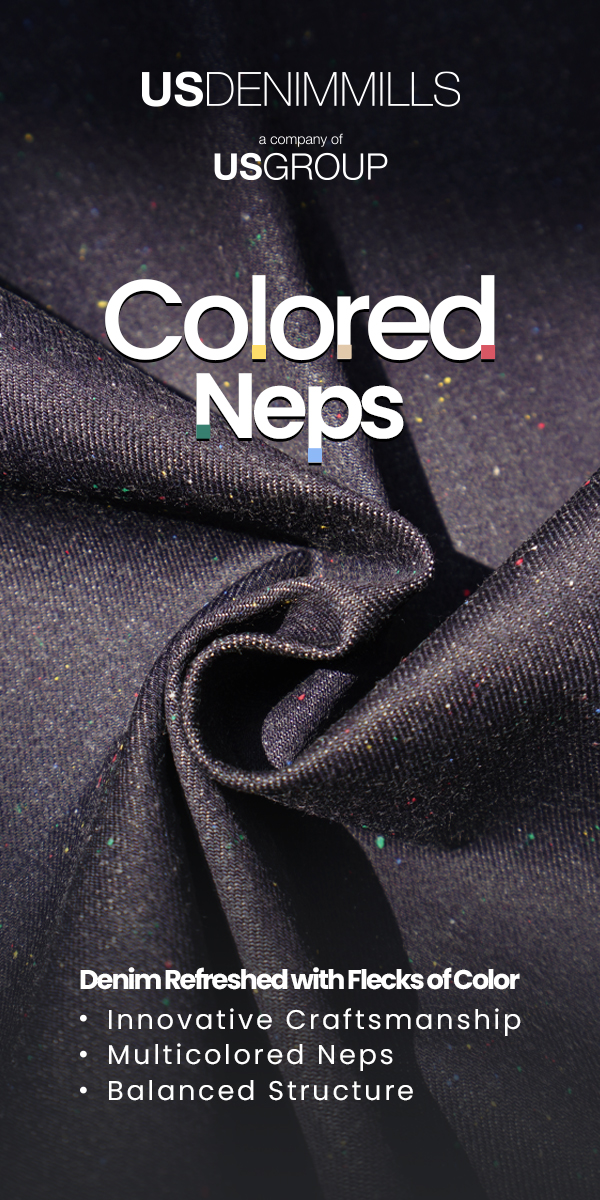The need for biodegradable fibres

Mexican fabric developer Tavex argues that the denim industry should have a preferential option for biodegradable fibres.
A denim mill, producing fabric collections for major fashion brands, Tavex has reached the conclusion that reasserting a preference for biodegradable fibres will help the industry address its contribution to the fashion sector’s carbon footprint.
Everything we make has a carbon impact: producing fibres, processing them, creating fabrics from them, washing and finishing the fabric, turning the fabric into a pair of jeans, transporting the garment to the consumer’s home, then washing the jeans after a certain number of wears and, finally, disposing of them at the end of their useful life. It all counts. And, according Tavex’s head of sales, Alicia León, any method for improving any aspect of the denim eco-system is worthy of serious consideration.
“The more proposals we look at, the better chance we have of finding solutions,” she explains, “and this includes developing a greater understanding of biodegradable fibres.” She says seeing images of clothing dumped in the Atacama Desert in Chile made her think about this in a new way. “I think if I went to the Atacama, what I would expect to see would be the sun and sand dunes,” she continues, “but we have all seen the images showing tonnes of garments that are not biodegradable.”
She says 39,000 tonnes of these garments are arriving in Chile every year and that the country is being used “almost as a dumping ground” for second-hand clothes, produced in Bangladesh and China for retail groups and consumers in Europe and the US. Ms León says she has also been alarmed by reports of fish coming into the human food chain with ocean plastic microfibres inside them.
In-house analysis
Tavex is part of the Siete Leguas Group, which makes finished garments for a host of leading denim brands, many of them from fabric produced by Tavex. In-house analysis of the biodegradability question set out to assess how long it would take for a pair of jeans made 100% from cotton, or from a mix of cotton and other cellulosic fibres to biodegrade. Tavex and Siete Leguas concluded that it would take between six and 12 months. “But we have a very serious problem,” Alicia León says. “If we put petroleum-derived fibres into those jeans, it could take anything from 40 to 200 years for them to biodegrade. It would be a serious contamination problem.”
Her colleague, Arlethe Sánchez, who is head of marketing at Tavex, points out that making a biodegradable product starts with the raw materials. “For us in the textile industry, it is obvious that this means the fibres we put into our fabrics.” Two of the three types of fibre she identifies, natural and manmade cellulosic fibres, are biodegradable. Only one type is not biodegradable, synthetic fibres deriving from non-renewable resources.
“Here is a curious point, though,” Ms Sánchez says. “Around two-thirds of all the clothes being manufactured globally now are made from those synthetic materials.” If it is true that these fibres do not break down in nature, she points out that it is also true that they provide performance characteristics that materials manufacturers and consumers have come to value highly, ranging from flame retardancy in protective clothing to stretch properties in swimwear.
Examples to follow
Alicia León flags up, from as long ago as 2014, a real-life example of denim clothing that was free from any non-biodegradable fibres, created by Swiss brand Freitag. The Zurich-based clothing brand wanted to source tough, sustainably produced and, crucially, compostable material that was made in Europe. It could not find anything on the market at the time that met its needs, so it decided to develop its own, starting from the fibre up, calling the programme F-ABRIC. It included sweatshirts, T-shirts, work trousers, overalls and jeans.
This programme ran through 2023, but will not continue now as Freitag turns its circular-economy focus to other types of product. At the time of writing, the company was selling off the last of its F-ABRIC products, including the final pairs of jeans for women and men. These jeans were made from the brand’s own denim twill, with a composition of 81% linen and 19% hemp. The fibres were grown in Europe, the denim fabric was woven in Italy and the finished garment construction took place in Poland.
Other initiatives the Tavex team admires include the WellThread collections from Levi’s, which seek to use innovative technologies, chemistry and fibres to make jeans, including a new version of the 501s that contain at least 97% plant-based material. They are also enthusiastic about projects for collecting and repurposing old jeans, for example in Cotton Inc’s Blue Jeans Go Green programme, launched almost 20 years ago.
Collection points
Translating all of this to the hustle and bustle of making fabric and finished garments for fashion brands with exacting demands would probably prove challenging for any company, but Tavex is working to adopt sustainable practices as completely as it can. “We are recycling some of the water we use in our processes,” Ms León says, “and we are also making use of stored rainwater. We use indigo that causes no contamination. We are trying to be a company that looks after our people and looks after the environment.”
Among its recent collections, Earthy Naturals offered distinctive-looking denim made from natural fabrics with ecru finishes. More recently, it developed a collection of fabrics called Denim Vibes, incorporating hemp. The properties of this fibre that Tavex likes include high levels of abrasion resistance and durability, its antimicrobial and UV resistance, the ease with which it absorbs dye, plus its breathability and washability.
Natural credentials
Further work is going on to enhance these natural credentials. Arlethe Sánchez indicates that increasing the use of a whole range of natural and manmade cellulosic fibres in its fabrics, plus its promotion of the use in finished garments of biodegradable sewing thread and buttons made from renewable, biodegradable materials, including coconut shell.
Rivets have a functional purpose as well as being decorative, Ms Sánchez points out, but she says sewing reinforcements into strategic parts of the garment using biodegradable fibres can also achieve both objectives. The same applies to external branding labels and care labels on the inside of the garment, she argues.
“If closures are one part of a pair of jeans that we have not yet been able to make from biodegradable material,” she says, “what we can do is make them easy to remove so that the whole of the rest of the garment can safely go into the earth.”
For Alicia León, a large number of fashion consumers today could, and perhaps should, bear all these considerations in mind when shopping for clothing. Labelling now, especially with QR codes on hang tags or in display areas, can provide the consumer with a wide range of information about the product, about the people who made it, the source of the raw materials and the policies of the brand selling it. She thinks that looking for products that will last a long time and that may be wearable by new owners further down the line is a good starting point. Then, eventually, if these products have come from the earth originally (in the form of natural raw materials), it would be good if they could return to the earth at end of life.
Weaving of Freitag’s linen and hemp denim twill.
Photo: Lukas Wassmann/ Freitag













